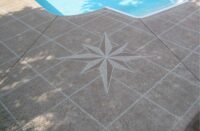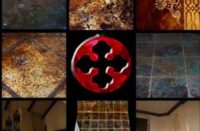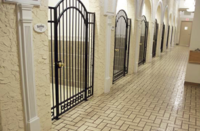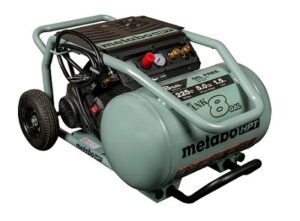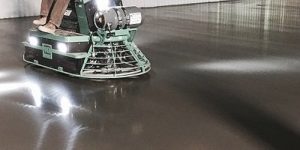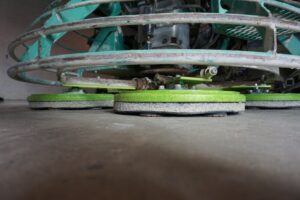Bruce Gesick, owner of Gesick Concrete, based in Sacramento, Calif., has been helping the GST International team research and develop the Elephant Armor overlay. On one recent test, he was able to finish a half-inch application with a riding trowel:
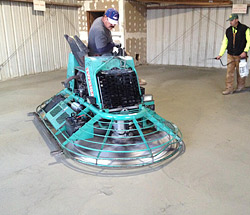 I’m a flat-floor laser-screed guy, so we were trying to do a hard-trowel finish with the Elephant Armor and actually put large machines on it, even riders.
I’m a flat-floor laser-screed guy, so we were trying to do a hard-trowel finish with the Elephant Armor and actually put large machines on it, even riders.
It’s very unusual for a micro-overlay to support the weight of a machine. Most of them are polymer-cement based, and they tend to want to pull real easy. We were able to hard-trowel and even machine Elephant Armor. We probably could have done it to a fuller extent if the temperature wasn’t 20 degrees. We were even able to put a 10-foot rider on it.
What I’m looking at being able to do with Elephant Armor is a large-scale floor, similar to what we would be able to do with the laser screed — 20,000, 30,000, maybe 40,000 square feet. We want to go in, place and finish it, and be able to give clients a seamless slab because we didn’t have to saw-cut it.
Saw cuts are typically a big negative in warehouses — high-production industrial facilities or facilities with a lot of forklift traffic — and that’s typically the type of job we do. There are a lot of older structures out there, big tilt-up warehouses where the slab needs to be refurbished. Being able to put Elephant Armor down without tearing anything out, and not having saw cuts in it, has a future.
There would be no problem with using a bubblegum release on it and stamping it if you wanted to. It’s cementitious-based, and it’s a little better of a surface to work with than polymer cement. It does have a lot of fiber in it, which makes it unique to work with, but it’s not like polymer cement where you almost have to put water on it almost every time you trowel it.
Also, we sounded the floor to check for delamination and I didn’t detect any issues.
Mark Bodenhamer, vice president of sales and procurement at Spec-West Concrete Systems in Sacramento, Calif., sells Elephant Armor at his stores. It’s priced just a little higher than competitors because of the technology involved, he says:
We patched asphalt with Elephant Armor, including an area with a transition from concrete to asphalt. The asphalt we patched was alligatored and nasty. Now, we have forklifts running over it, tractor-trailers running over it. It’s just holding up like a mother.
There really isn’t anything similar. This stuff just does not crack. It’s close to amazing.
We could have used an asphalt cold patch that would last six months to a year. The Elephant Armor has only been down for three or four months and we don’t have freeze-thaw in Sacramento. But it’s been holding up really well.
One of my guys yesterday took a bag and made a slab a little less than 1/2-inch thick. It’s sitting on top of four 5-gallon buckets. Just for giggles I stood on it and it bent substantially but it didn’t crack. Pretty cool.
It holds texture better than anything I’ve ever seen. It’s a little on the furry side but that’s only visible if you’re right on it. The fiber just kind of blends in. In fact, you really have to look for it.
One Elephant Armor patch was put down with just a roller. We didn’t really finish it or anything. It has little ridges on it. Most patches, if they have ridges, you can kick them off. Well, you’ll ruin your shoe before you get one of these ridges off. I know because I have a gash in my shoe.
